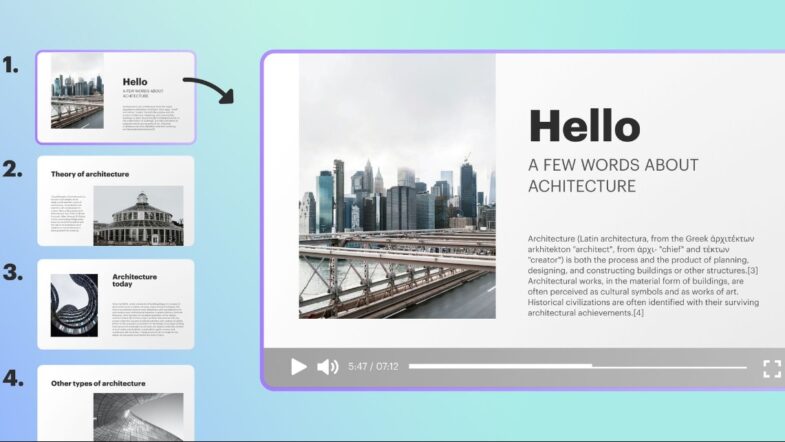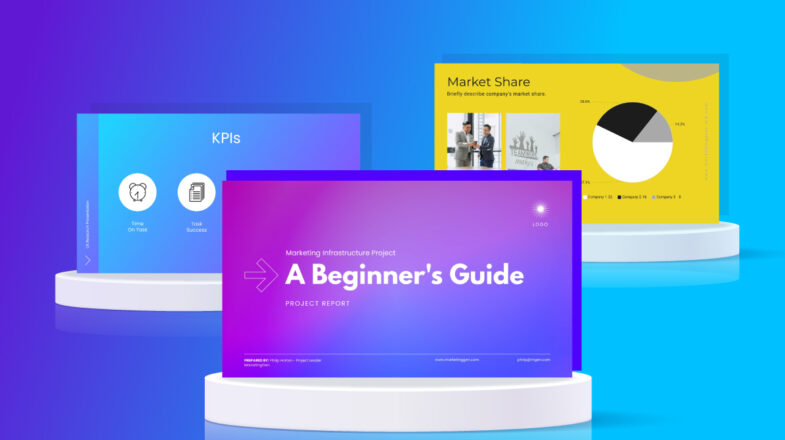Presentations are a powerful tool in the modern world, serving as a bridge between ideas and audiences.
Whether it’s for business, education, or personal projects, a well-designed presentation can significantly impact how your message is received.
In this article, we delve into the key practices and tips for creating engaging and effective presentations. We’ll explore everything from the initial planning stages to the final touches that make your slides stand out.
So, let’s embark on this journey to transform your presentation skills!
Crafting a Compelling Narrative
The foundation of any great presentation is a compelling narrative. This is the storyline that guides your audience through the information, making complex topics accessible and engaging. Start by defining your main message – what is the core idea you want your audience to take away?
Once established, structure your content logically, ensuring each slide builds on the last. Remember, a good story evokes emotions, so incorporate elements that resonate with your audience, whether it’s humor, empathy, or inspiration. Use analogies and personal anecdotes to make abstract concepts tangible and relatable. Finally, ensure your narrative is concise – each slide should serve a clear purpose in forwarding your story.
Enhancing Visual Appeal with Imagery

Source: restream.io
Visual elements play a crucial role in enhancing the appeal and effectiveness of your presentation. In this digital age, using high-quality imagery, such as stock photos, can significantly elevate your slides.
When selecting these images, ensure they are relevant to your content and add value to your narrative. They should complement and reinforce your message, not distract from it. The right image can convey emotions, set the tone, and make complex topics more digestible. Be mindful of image quality and resolution – blurry or pixelated images can detract from your professionalism.
Additionally, balance your slides with a mix of text and visuals, using white space effectively to create a clean, uncluttered look.
Utilizing Effective Design Principles
Good design is key to creating presentations that are both appealing and easy to follow. Adhere to basic design principles such as contrast, alignment, repetition, and proximity. These principles help in organizing information in a way that is visually pleasing and easy to digest.
Use contrast to highlight important elements, align-items for a tidy look, repeat styles for consistency, and keep related items close together for cohesiveness. Choosing the right color scheme is also crucial – use colors that reflect the mood of your presentation and ensure good readability.
Fonts should be legible and professional, with a size that’s easy to read from a distance. Remember, simplicity often trumps complexity in design.
Engaging Your Audience
Engagement is the key to a memorable presentation. Interact with your audience by asking questions, encouraging participation, or including interactive elements like polls or quizzes. Tailor your content to the interests and knowledge level of your audience – they should feel the presentation is designed for them.
Use storytelling techniques to make your points more memorable, and don’t shy away from using humor where appropriate. Your body language and tone of voice also play a significant role in engagement – be enthusiastic and confident to keep your audience invested in your message.
Rehearsal and Feedback

Source: presentationteam.com
The final step in creating an effective presentation is rehearsal and feedback. Practice your presentation multiple times to become familiar with the flow and content. This will help you manage time effectively and deal with any nerves.
Seek feedback from peers or mentors to gain insights into how your presentation is perceived. Be open to constructive criticism and use it to refine your slides and delivery. Remember, a well-rehearsed presentation comes across as polished and professional, leaving a lasting impression on your audience.
Leveraging Technology and Tools
In today’s digital era, leveraging technology and tools is essential for enhancing presentation design. There is a plethora of software and applications available that can transform a standard presentation into an interactive experience.
Utilize advanced features in presentation tools like animations, transitions, and embedded videos to add dynamism to your slides. However, use these features judiciously – overuse can distract from your core message.
Tools for audience interaction, like live polls or Q&A sessions, can also be integrated to make your presentation more interactive and engaging. Additionally, consider using data visualization tools to present complex data in a clear, visually appealing manner.
Graphs, charts, and infographics can make statistical information more digestible and interesting. Embrace these technologies to stay ahead in the presentation game, ensuring your content is not just informative but also technologically savvy and engaging.
Mastering the Art of Delivery
The delivery of your presentation is as crucial as its content and design. Mastering this art involves more than just reciting your slides – it’s about connecting with your audience on a personal level. Start by refining your public speaking skills.
Work on your pacing, tone, and volume to ensure clarity and emphasis. Use pauses effectively to let important points sink in. Body language is another critical aspect – maintain eye contact, use gestures for emphasis, and move around the stage to engage different parts of your audience.
Be prepared to adapt your delivery based on audience reactions. If a particular point sparks interest, be ready to delve deeper. Conversely, if you notice waning attention, consider moving faster through less engaging sections.
Remember, a confident and dynamic delivery can significantly amplify the impact of your presentation, making it a memorable experience for your audience.

Source: visme.co
Conclusion
Great presentation design is a blend of compelling storytelling, appealing visuals, sound design principles, audience engagement, and thorough preparation.
By following these best practices and tips, you can create presentations that not only convey your message effectively but also leave a memorable impact on your audience. Remember, the goal is not just to present information but to connect with your audience and inspire them.
With these strategies in hand, you’re well on your way to crafting presentations that resonate and inspire.
